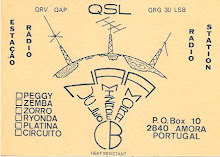Rio de Janeiro (IPA: Portuguese: [ˈhiw dʒi ʒʌˈnejɾu], "River of January"; English ['ɹioʊ deɪ ʒəˈnɛɹoʊ]), is the name of both a state and a city in southeastern Brazil. The city was the capital of Brazil (1763-1960) and of the Portuguese Empire (1808-1821). Commonly known as just Rio, the city is also nicknamed A Cidade Maravilhosa - "The Marvelous City".
It is famous for its spectacular natural setting, its Carnival celebrations, samba and other music, hotel-lined tourist beaches, such as Copacabana, Ipanema, and Leblon and pavements decorated with black and cream swirl pattern mosaics. Some of the most famous local landmarks in addition to the beaches include the giant statue of Jesus, known as Christ the Redeemer ('Cristo Redentor') atop Corcovado mountain; Sugarloaf mountain (Pão de Açúcar) with its cable car; the Sambódromo, a giant permanent parade stand used during Carnival; and Maracanã stadium, one of the world's largest. Rio also boasts the world's largest forest inside an urban area, called Floresta da Tijuca, or 'Tijuca Forest'.
Rio de Janeiro is located at 22 degrees, 54 minutes south latitude, 43 degrees 14 minutes west longitude (). The population of the City of Rio de Janeiro is about 6,094,183[3] (2005 IBGE estimate), occupying an area of 1,182.3 square kilometres (456.5 sq mi)[4]. The larger metropolitan area population is estimated at 11-12 million. It is Brazil's second-largest city after São Paulo and was the country's capital until 1960, when Brasília took its place. Residents of the city are known as Cariocas. The city's current mayor (2006) is Cesar Maia. The official song of Rio is "Cidade Maravilhosa." (translated as "Marvelous City")








.jpg)







0 comentários:
Enviar um comentário